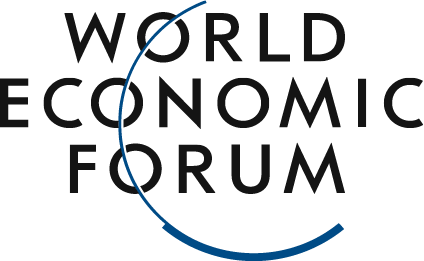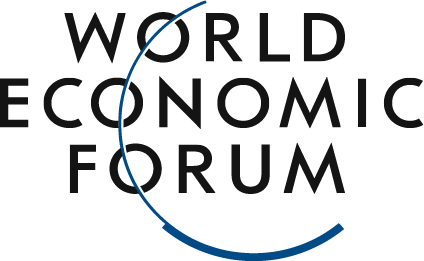Home/News/Digital solutions are poised to offer a "fresh approach" to ensuring safe medication use for seniors./
Digital solutions are poised to offer a "fresh approach" to ensuring safe medication use for seniors.
2024-05-09
:Alexander Grey/Unsplash
Population aging is an irreversible global trend. By 2050, people aged 65 and older are expected to account for one-sixth of the world’s population. As individuals grow older, supportive environments play a critical role in helping seniors maintain their activity levels and independence. On International Day of Older Persons 2023, the United Nations called for "building more inclusive, age-friendly societies and creating a more resilient world for everyone."By the end of 2023, China’s population aged 60 and above reached 297 million, accounting for 21.1% of the total population. According to projections from the United Nations Population Division, this proportion is expected to continue rising steadily, peaking at 35% by mid-century—when the elderly population will reach a staggering 484 million—and remaining at that level through the end of the century. Meanwhile, surveys reveal that more than 75% of Chinese seniors aged 60 and older suffer from chronic diseases, while the number of elderly individuals nationwide who are either fully or partially disabled has already surpassed 44 million.
The challenging reality of declining quality of life among the aging population not only strains household finances but also places immense pressure on the nation’s healthcare system—and ultimately poses a significant risk to long-term economic growth.As aging accelerates, the demand for health services among individuals with chronic diseases and those experiencing suboptimal health has surged dramatically, highlighting the critical importance of promoting health, preventing illness, and providing effective treatment throughout the entire life cycle. Poor medication adherence remains a widespread issue among older adults, affecting more than 50% of this population, while over 60% of seniors face vision challenges. Many elderly patients are required to take multiple medications daily to manage their chronic conditions. According to the 2022 Annual Report on Drug Adverse Reaction Monitoring in China, seniors aged 65 and older accounted for 32.3% of all reported adverse drug events—far exceeding the proportion seen in other age groups. Moreover, in recent years, the problem of elderly individuals struggling to read or understand medication labels due to small font sizes and overwhelming amounts of information has become particularly acute. As the elderly population continues to grow, ensuring that seniors can clearly see and comprehend these instructions has emerged as a key factor influencing their access to safe and effective healthcare.Meanwhile, the COVID-19 pandemic has accelerated the shift among seniors toward using smartphones for online medical consultations, medication inquiries, and other related services. According to the 51st "Statistical Report on China's Internet Development," China now has 153 million elderly internet users aged 60 and above, with an adoption rate exceeding 50%. Thanks to innovative digital solutions, it’s increasingly possible to address the frequently encountered medication needs of older adults. So, how can we build a "senior-friendly" infrastructure that ensures safe and effective medication management?1. Government-level top-level design is gradually becoming clearer.As early as 2020, local governments had already proposed initial solutions to this issue. For instance, in June 2020, the Shaanxi Provincial Drug Administration issued guidelines encouraging pharmaceutical companies across the province to include QR codes for electronic package inserts on drug packaging labels. Patients can scan these codes to access digital versions of the instructions and, if needed, even adjust the font size of the text to suit their preferences.In June 2023, China officially enacted the "Law of the People's Republic of China on the Construction of Barrier-Free Environments," mandating that "pharmaceutical manufacturers and operators provide labels and package inserts in accessible formats, including audio, large-print, Braille, and digital versions." The law took effect on September 1. Later that same month, in October 2023, the National Medical Products Administration (NMPA) released the "Pilot Work Plan for Age-Friendly and Accessibility Reform of Drug Package Inserts," launching a pilot program in provinces such as Shanghai, Jiangsu, Zhejiang, Jiangxi, Shandong, Hunan, Guangdong, and Shaanxi.2. The pharmaceutical industry continues to face challenges.Understanding the need for safe medication use among seniors and other visually impaired patients, pharmaceutical companies have taken steps such as highlighting critical information—like dosage instructions, usage guidelines, indications, and potential side effects—by increasing font size, using bold text, and adding underlining. Meanwhile, many pharmacies have established dedicated medication-service counters, offering tools like magnifying glasses or arranging for professional pharmacists to assist seniors in comprehending how to properly use their medications.However, changes to paper-based drug labels inevitably require corresponding adjustments to the pharmaceutical production line—such as modifying label paper size, folding methods, or even the dimensions of the packaging boxes. Moreover, adjusting the font size would involve significant implementation costs, a lengthy timeline, and the practical challenge of not being able to retroactively update drugs already on the market. Under these circumstances, companies urgently need a cost-effective, economically viable solution that’s both manageable and scalable.3. Digital technology is expected to deliver efficient solutions.As the "ID card" for pharmaceutical products, the traceability code assigns a unique identifier to each box of medication. Currently, over 70% of pharmaceutical products circulating in China already come with this "ID card" printed on their packaging. Leveraging this technology, pharmaceutical manufacturers can effortlessly upload digital drug instructions, enabling them to provide seamless, tailored services for every single package—without incurring any additional production costs.
Moreover, by integrating AI-powered natural language recognition technology, these instructions can be accurately interpreted and dynamically converted into clear, voice-guided explanations. This innovative approach empowers elderly users to easily "hear" the instructions directly on their smartphones, ensuring they can understand critical details like dosage, side effects, and contraindications—crucial for safe medication use.
For instance, Alibaba Health, in collaboration with Alibaba Foundation, has launched a project aimed at adapting drug packaging for older adults. To date, nearly 34,000 nationally approved drug packages have been enhanced with these new features. Simply scan the traceability code on the packaging using Taobao or Alipay, then tap "Drug Instructions." Users will not only access large-print versions of the instructions—clearly displaying essential information such as dosage, indications, adverse reactions, and contraindications—but also enjoy the convenience of audio playback, making it easier than ever for seniors to manage their medications safely and confidently.Standing at a new starting point in the age of intelligence, we are committed to building a more inclusive and secure social environment for seniors. As innovative enterprises increasingly leverage the groundbreaking advancements in digital and AI technologies, older adults will soon be able to fully embrace the benefits of the digital economy—experiencing both its widespread accessibility and unparalleled convenience—ultimately making "technology truly warm and society even better."
Feel free to share this on WeChat Moments; please leave a comment below the post if you’d like to republish.
Editor: Wang Can
The World Economic Forum is an independent and neutral platform dedicated to bringing together diverse perspectives to discuss critical global, regional, and industry-specific issues.
Follow us on Weibo, WeChat Video Channels, Douyin, and Xiaohongshu!
"World Economic Forum"





